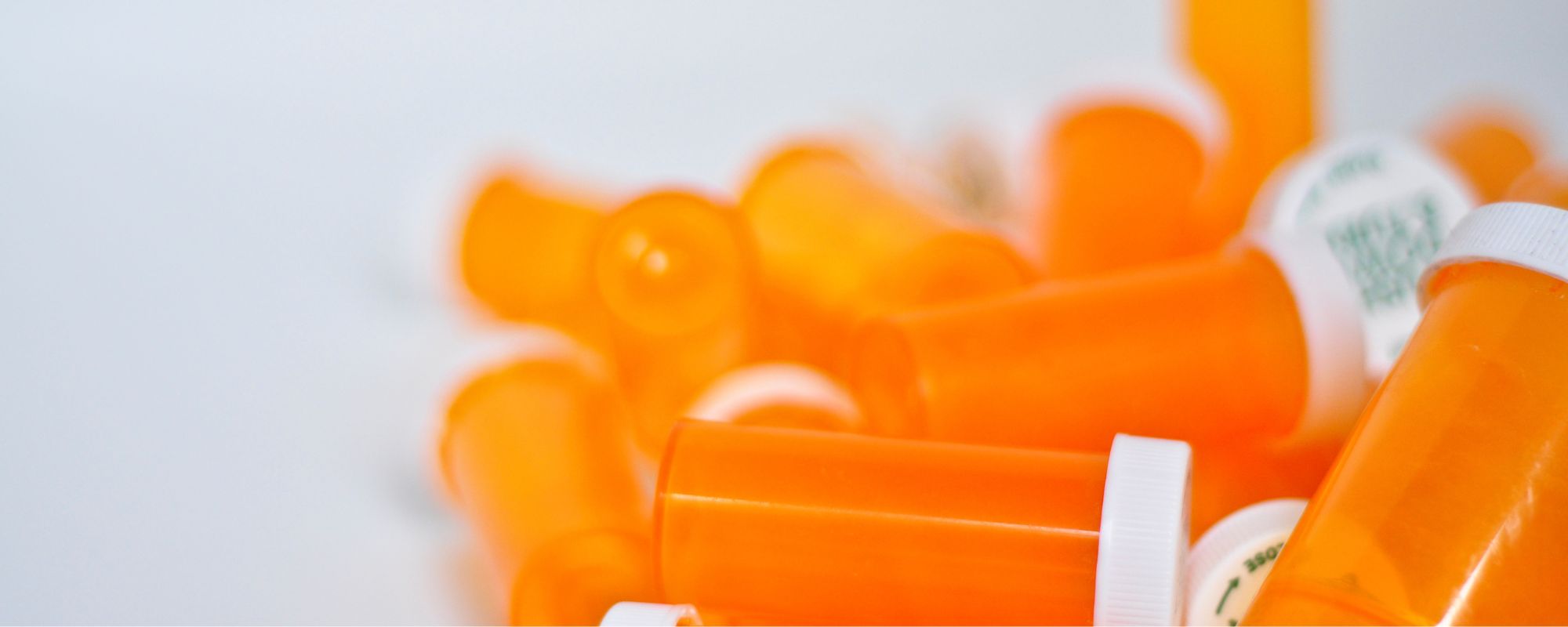“Molly” is a common slang term for MDMA, a synthetic drug primarily used that induces intense feelings of euphoria.
The full name for molly is 3,4-Methylenedioxymethamphetamine. It’s better known under its more common street name of ecstasy. Regardless of whether you call it ecstasy or MDMA, it is known for producing feelings of increased energy, pleasure, emotional warmth, and distorted sensory and time perception.
The main ingredient in MDMA is safrole, a substance found in plants like the yellow camphor tree. Safrole is then processed in a series of chemical reactions to produce MDMA.
However, there are numerous risks associated with the use of MDMA. Some of the negative effects of MDMA include overheating, dehydration, hypertension, heart failure, or kidney failure, among other risks.
MDMA can also interfere with the body’s ability to regulate temperature. On rare occasions, this can lead to a sharp increase in body temperature (hyperthermia), which can result in liver, kidney, or cardiovascular failure or even death.
Whether it’s called molly or ecstasy, MDMA is often associated with dance parties, raves, and electronic dance music due to its psychoactive effects. Some may engage in a practice called microdosing, where they use small amounts of the drug.
In this article, we’ll be covering all you need to know about the drug Molly.
What Are the Signs and Symptoms of MDMA Use?
The signs and symptoms of MDMA use can be quite varied and can depend on the dosage, the individual’s physiology, and whether the drug has been mixed with any other substances. According to the Drug Enforcement Administration, most users swallow or snort the drug, although some may smoke it. The effects of MDMA remain consistent depending on usage method.
Here are some typical signs and symptoms that could be seen with MDMA use:
Physical Symptoms:
- Increased body temperature (hyperthermia), which can sometimes lead to serious complications such as liver, kidney, or cardiovascular system failure
- Increased heart rate and blood pressure
- Sweating or chills
- Teeth clenching or grinding (bruxism)
- Nausea
- Blurred vision
- Faintness or fainting
- Severe dehydration, especially when MDMA is taken in conjunction with vigorous physical activity like dancing
- Muscle cramping
- Involuntary teeth clenching
Psychological Symptoms:
- Euphoria or intense feelings of happiness and well-being
- Increased sociability and feelings of connectedness or empathy with others
- Enhanced sensory perception – lights may seem brighter, sounds more distinct, etc.
- Increased energy and alertness
- Altered perception of time
- Anxiety or paranoia
- Trouble sleeping (insomnia)
- Hallucinations, delusions, and loss of touch with reality (less common)
There are also a variety of “after-effects” associated with coming down from an MDMA trip.
This can include symptoms such as:
- Anxiety and depression
- Restlessness, irritability, or sadness
- Fatigue and sleep problems
- Lack of appetite
- Concentration difficulties
- Decreased interest in and pleasure from sex
These are all potential signs and symptoms of MDMA use. However, it’s important to remember that this isn’t an exhaustive list and the exact symptoms can vary from person to person.
If you or someone you know is abusing MDMA, reach out for addiction treatment.
Get confidential help from our addiction treatment specialists in Orange County. Call to join our rehab program today!
Call 866-881-1184How Long Does MDMA Stay In Your System?
How long MDMA lasts depends in some measure of the level and method of MDMA dosage.
It usually takes about 20 to 30 minutes to kick in and the effects can last between two to four hours.
As for how long MDMA stays in your system after last usage, that depends on the person’s age, metabolism, body mass, hydration level, as well as any other drugs in their system.
Here are some general timelines for different types of drug tests:
- Urine Tests: MDMA is usually detectable in urine for 1-3 days after use, but can sometimes be detected up to 3-5 days after use in some individuals or after heavy use.
- Blood Tests: MDMA can be detected in the blood for approximately 1-2 days after use.
- Saliva Tests: Saliva tests can typically detect MDMA from 1-2 days after use.
- Hair Tests: Hair testing has a much larger detection window and can potentially detect MDMA for up to 3 months or even longer after use.
Keep in mind these are only estimations and the timeline can vary from person to person.
Is Molly Addictive?
While it may not be as addictive as some other substances, such as cocaine or heroin, repeated use of MDMA can lead to psychological dependence. This means that users may find it difficult to enjoy social settings or feel happy without molly in their system.
Frequent use can also lead to tolerance, which means users need to take more of the drug to get the same effect they used to get with smaller doses. This increased use can lead to physical harm, as MDMA can be dangerous, especially at high doses.
In addition, withdrawal symptoms can occur when a person stops using the drug, including fatigue, loss of appetite, depression, and trouble concentrating.
As with any addictive drug, the exact level of addictiveness can vary between individuals, depending on a variety of factors such as genetics, mental health, environment, and frequency of use.
It’s important to remember that even if someone does not become addicted to MDMA, it can still have serious health risks, including hyperthermia (overheating), hyponatremia (low sodium levels), heart or kidney failure, and even death.
Looking for quality substance abuse treatment that’s also affordable? South Coast accepts most major insurance providers. Get a free insurance benefits check now.
Check Your CoverageDrug Addiction Treatment at South Coast Behavioral Health
We at South Coast Behavioral Health are dedicated to providing affordable and compassionate addiction treatment. If you are addicted to stimulants like MDMA or other street drugs, we are ready to help you recover. The long-term effects of MDMA abuse are significant. Party drug abusers may think they’re having fun, but in reality, they are opening the door to addiction to synthetic drugs and health issues.
Here is what you can expect from seeking treatment with us.
Medical Detox in Irvine and Huntington Beach
Before starting treatment, you’ll enter our fully accredited medical detox program. Here, in a safe and welcoming environment, our certified medical detox professionals will support you with round-the-clock care as you clear addictive substances from your system.
We at South Coast take pride in offering comprehensive care that is closely targeted for specific problems. To that end, we offer gender-specific detox programs, with medical detox for men in Irvine, CA, and medical detox for women in Huntington Beach, CA.
If you desire gender-specific care, we offer medical detox for men in Irvine, CA, and medical detox for women in Huntington Beach, CA.
Residential Treatment in California
After detoxing, proper treatment can begin.
Upon exiting our detox program, you’ll move to inpatient treatment in Orange County California. There, you’ll receive medically-assisted treatment and dual diagnosis treatment to deal with any cravings or co-occurring mental health issues you may be battling. We also offer residential treatment facilities in Costa Mesa, Irvine, and Huntington Beach for those who desire gender-specific treatment. There, patients get round-the-clock medical attention and monitoring while living at the institution full-time.
In addition to individual and group counseling and medication management, you’ll also have access to leisure activities and family support services.
Partial Hospitalization in California
Most clients start substance abuse treatment with South Coast in our residential treatment program. After completing that, many desire something that still provides structure and support, but with extra space and time to oneself. For that, we offer Partial Hospitalization in Newport Beach.
A step down from inpatient care but with more structure than conventional outpatient programs, partial hospitalization offers a good balance for those looking to ease back into normal life. Clients can receive care five to seven days a week for several hours each day, returning to their homes in the evening.
This way, they can recover without putting their daily lives completely on hold, receiving intense therapeutic interventions like group and individual therapy, skill development, and medication management as necessary.
Intensive Outpatient Treatment in California
For those leaving inpatient residential treatment or partial hospitalization, intensive outpatient programs (IOP) are yet another gradual step forward on the road to recovery.
With a focus on group therapy, individual counseling, and psychoeducation, clients undergoing Intensive Outpatient Treatment in Newport Beach can expect to meet three to five days a week of therapy, with each session lasting three hours. This level of care requires the least amount of attendance at a facility
IOPs offer participants the ability to continue their employment or academic obligations, receiving support and therapy as needed as they prepare to reenter society.
Get Started Today
If you or a loved one are thinking of seeking addiction treatment for MDMA (ecstasy) but have questions, call us at 866-881-1184. Our highly qualified staff will be happy to help give you an idea of what to expect from your addiction recovery timeline, help verify your insurance, and assist with any other questions you may have.









